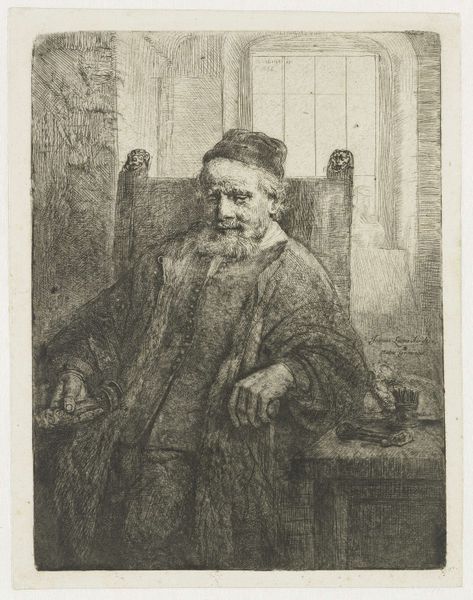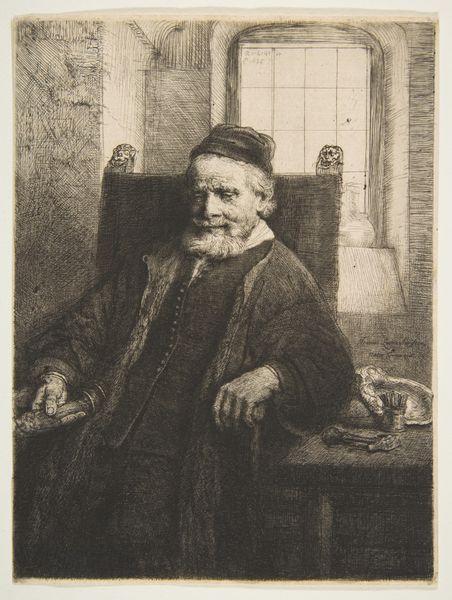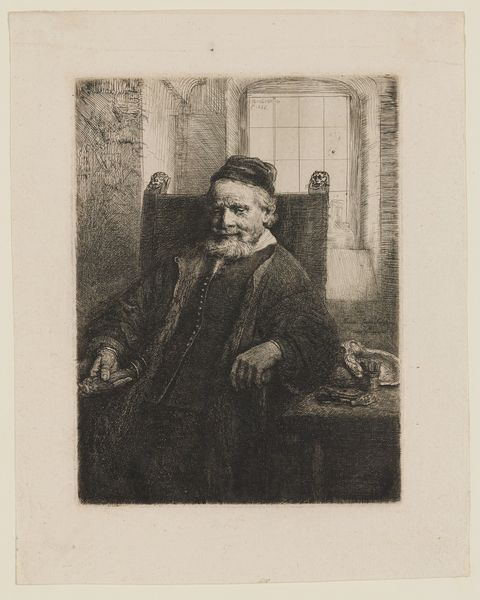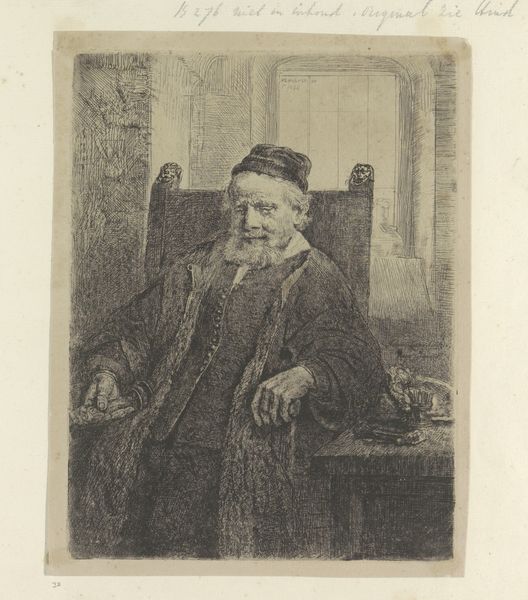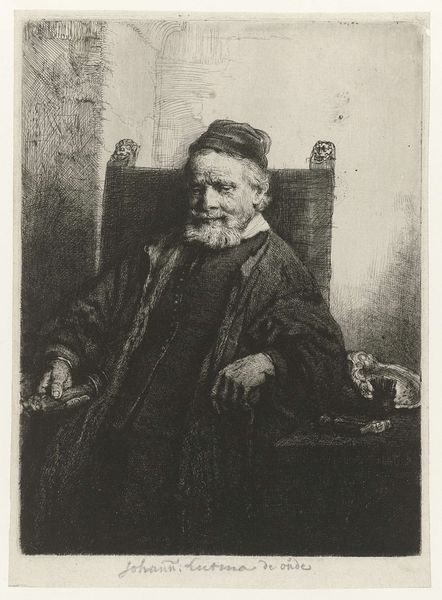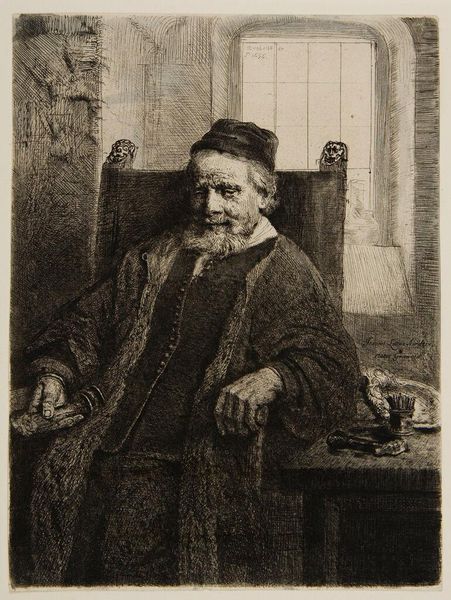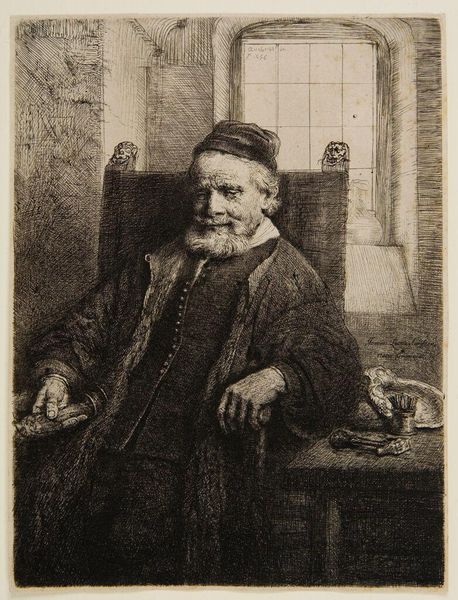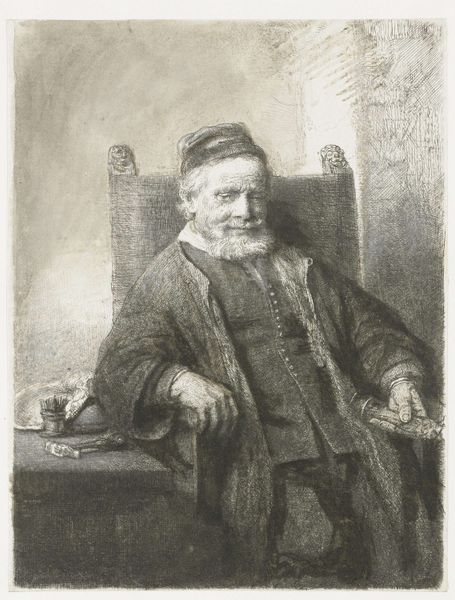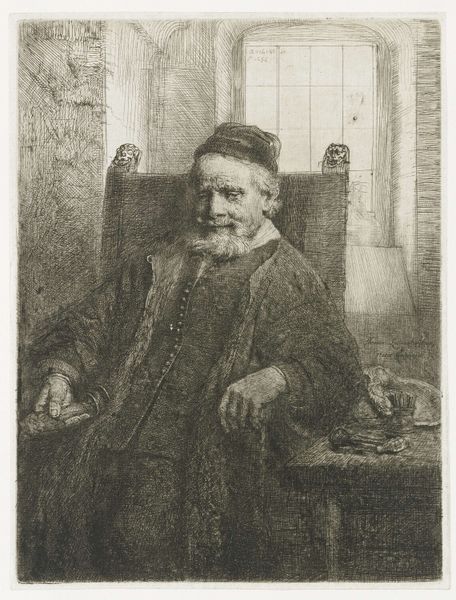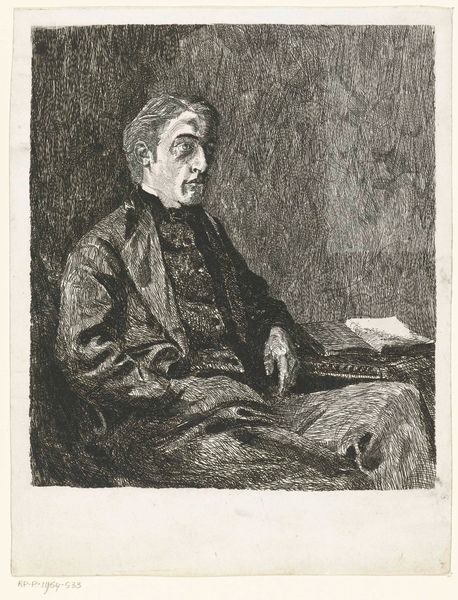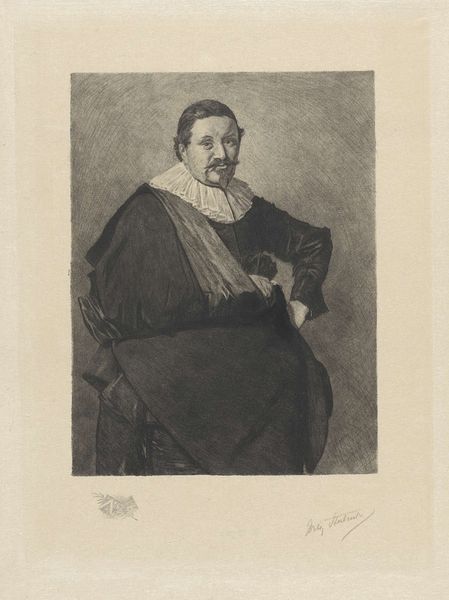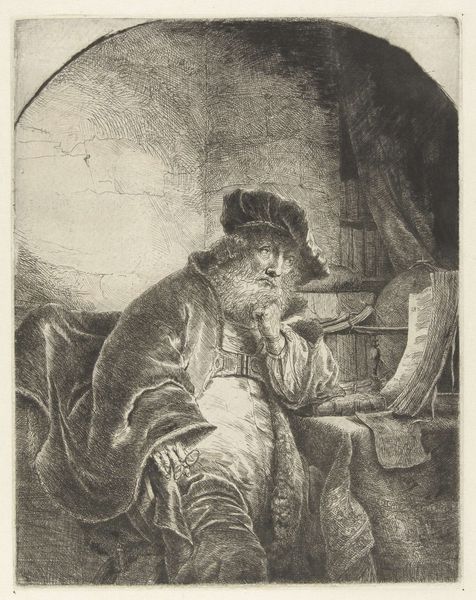
drawing, print, etching, ink, charcoal
#
portrait
#
drawing
#
dutch-golden-age
# print
#
etching
#
charcoal drawing
#
charcoal art
#
ink
#
pencil drawing
#
charcoal
Dimensions: height 197 mm, width 148 mm
Copyright: Rijks Museum: Open Domain
Curator: This etching, entitled "Jan Lutma, goldsmith," was created by Rembrandt van Rijn around 1656. It's currently held in the Rijksmuseum. My immediate impression is its stillness. The subdued lighting and introspective posture convey a sense of quiet contemplation. What do you see? Editor: The texture leaps out at me! The goldsmith's wrinkled skin, the furrows of his brow, the coarse fabric of his robes. They all contribute to a narrative of lived experience, don't they? A potent image of ageing. The symbolism here… Lutma represents resilience and wisdom etched through time, much like the lines of the engraving itself. How do we contextualize such portrayals in Dutch society at the time? Curator: Considering the historical context, this work acts as a potent statement, reflecting a shift towards the valorization of skilled labor and individual achievement within Dutch society during the Golden Age. It presents an opportunity to reflect on the complexities of class and labor representation during this period of capitalist growth. Editor: I see those sharp contrasts employed by Rembrandt! Is it also about the spiritual illumination that comes with mastering a craft? Gold as a substance has so much embedded lore and value—it also carries potent spiritual associations across various cultures. Curator: Absolutely! And the setting itself is very telling. The light streaming through the window in the background doesn't just illuminate Lutma—it invites viewers to think about the enlightenment borne out of dedication. Do you also see, perhaps, a critique embedded here? It invites questions around the perceived nobility of artisanship versus other forms of power at the time. It asks if we as viewers considered the inherent labor involved in achieving 'prestige'. Editor: Yes, and if we see those symbols reflected now, does it provoke reflections on consumption and creation as value judgments in our own world? We have, across the centuries, inherited symbols around skilled labour; this offers potent dialogue across cultures and centuries. Curator: It does offer plenty of material for introspection indeed, concerning contemporary discussions on commodification and labour. Editor: It makes us pause to re-evaluate our understanding of these continuities! Curator: Absolutely. By looking at Lutma, we gain insight into the cultural values placed upon artistic expertise in a time so drastically different from our own.
Comments
No comments
Be the first to comment and join the conversation on the ultimate creative platform.
